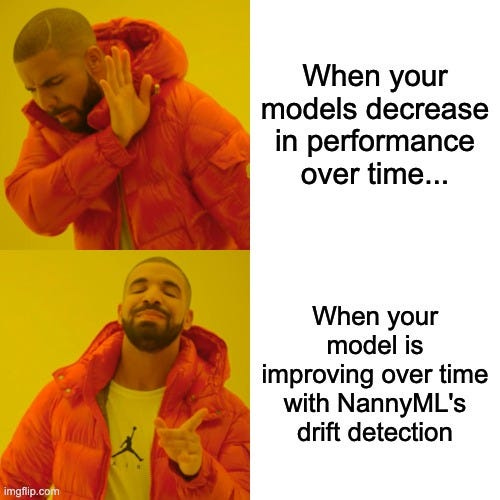In the 21st century, most people frequent supermarkets for their food and supplies, yet local markets and artisanal builders continue to thrive. Why is this?
The world today can be likened to a supermarket of ideas and intelligence. Supermarkets offer convenience, affordability, and a means for everyone to step up their game. But what would be the equivalent of an artisanal shop or handcrafted product in the new story arc Large Language Models (LLMs) are bringing to the world?
LLMs are gaining momentum, outpacing human capabilities and providing a broader perspective on problem spaces.
Just as humans are essentially made of chemicals, LLMs are based on matrix multiplications. They will eventually deliver superior, faster, and optimized results.
However, the true essence of our existence lies in the process and the emotions it evokes. The chemicals. As humans, we value this process and the connections we forge, regardless of stock prices, media, or material possessions.
The widespread adoption of LLMs is inevitable, with well-founded concerns arising. The internet democratized knowledge, and LLMs are now bringing intelligence to the masses.
But our collective intelligence is as unpredictable as a red fish. Has the internet killed something within us or stripped away our humanity? Opinions may vary, but as a biased millennial, I believe it hasn't.
LLMs are powerful tools, like fire and electricity, which have the potential to amplify our humanity. They may bring suffering and destruction, but ultimately, our ideas fuel the reality we live in. It's all about us.
Experienced developers and wise individuals often advise focusing on the process rather than the outcome. This remains our primary challenge in every aspect of life – within families, companies, and countries – as "process" symbolizes more than a sequence of actions; it encapsulates the human element, the collaboration, the growth, and the shared understanding.
The forthcoming narrative will initially highlight the tools, much like when fire or electricity first emerged. But as we progress, I believe humanity and its values will take center stage. The focus will shift from technology to the people and policies that shape our world. Like always.
Welcome to a new story arc.
📡 Expected Contents
Data Modeling
That's probably the data-engineering thing to read this month: Simon Späti last blog around data modeling.
I recently discussed with 10+ experimented data-engineer. What's his main challenge? Data engineers who don't know about data modeling. From discussing only one hour with him I learn several terms and techniques I never learn in previous job or at school. Shame on me ? No, the landscape is wide and concepts are only 15 years old.
Simon's post is definitely the blog post to keep in mind and read several times to get the most important concepts around data-engineering. Lovely resource ✨.
The Next Big Crisis for Data Teams
Big echos with some of my recent blog posts : Barr Moses, CEO Monte Carlo, shares a great analysis of data teams and forthcoming challenges.
Modal
End-to-end cloud compute
Model inference, batch jobs, task queues, web apps and more. All without your own infrastructure.
Modal is Erik Bernhardsson (music recommandation system at Spotify and ran the engineering team at Better) last company.
It's new and shiny but they ultimately bring something new. Something that goes beyond the cloud providers. As they said it's "cloud 2.0".
Logging practices
Logging is one of the most important practices in software development. When developers face incomprehensible errors it's mostly about bad logging.
Eliran comes with great practices around logging - a short read everyone have to get in its bookshelf.
📰 The Blog Post
Maximizing Business Value with NannyML: A Guide to Machine Learning Model Interpretability
I recently deep-dive into NannyML Python library : a very nice package to get in your machine learning toolbox.
Wrote a full blog post about it :)
🎨 Beyond The Bracket
A transit map should be simple, comfortable, and nice-looking, designed with loving care and for people. It should attract tourists to the city and have reasons to make residents enjoy it. Berlin has received such a map.
As you may know, I'm a big fan of maps. I recently came across that new Berlin transit map revamp. It got me thinking about how vital good design really is. How it can impact a product and user experience.
Take a look at what happened at Kestra. We decided to revamp our whole website and app, and thanks to Nicolas our lead designer, it was like night and day compared to the first iteration. The transformation was astounding. The interface became more user-friendly, the visual experience more captivating. Our pipelines, instead of being mere numbers in an algorithm, became a living, inviting users to engage, explore, and understand.
Why does this matter, you ask? Product adoption, for one. An appealing interface draws users in, makes them stay longer, explore more, and ultimately choose to use your product over others. It's not just about what your product can do, it's also about how your product is presented.
A remarkable design isn't just the cherry on the top, it's an essential part of the cake. It's the difference between a user feeling lost in a labyrinth of data or feeling empowered to make insightful decisions. It's the difference between a product that's overlooked and one that's adopted enthusiastically.
A well-designed product doesn't just perform its function, it tells a story. A story that invites, engages, and captivates.
What I cherish more than the maps themselves is the backstage pass to the creation process. Unveiling the craftsmanship - something we often miss from our leaders and top-notch products - is truly captivating.
This comprehensive article elucidates the design process behind the Berlin transit map. Whenever I stumble upon such content, it's an irresistible click-magnet for me.
Time is getting shorter here. Summer vibes are pushing everywhere. Got some nice song discoveries, nice photos, nice discussions, nice moments. Love that feeling.
Whenever you're in a good mood or sad, take a moment to appreciate life. Go for a walk, read that book, or better: sit down alone for thirty minutes with your thoughts 💭
See you next month ☀️











